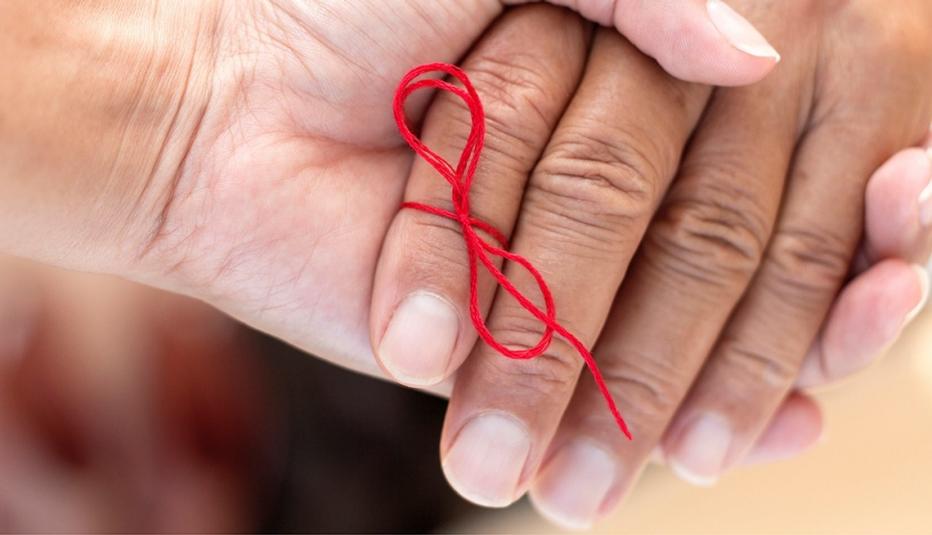AARP Hearing Center
How Age Affects Stress and Well-Being


A common assumption is that stress is a constant—a part of life. That may be true, but stress levels generally decrease with age, a new AARP survey finds. The survey results also show that Americans’ coping mechanisms can vary by age.
The most common stressor for people of all ages is the death of a close family member, an event experienced by about 62% of adults in the last five years—75% of those over 50 and 50% of those 18-49. Coming in second in the survey is job stress, at 36%. Stress factors related to finances and money (increase in expenses, money is tight and decrease in income) meanwhile, hold three spots in the top 10 list.
The 2018 AARP Brain Health and Mental Well-Being Survey gives a snapshot of what is weighing on Americans over age 18 and how they react to stressors. It reveals Millennials (age 22 to 37) have the highest level of stress while those in the Silent/Greatest Generation (over 73) have the lowest.
Most stressors—such as moving, family conflict, or job stress—diminish significantly over time; researchers label such stressors as “acute.” About 29% of young people say they experience loneliness, an acute stressor, compared to 17% of those age 50 and older. “Chronic” stressors, meanwhile, include such experiences as the death of a child, caregiving, and being the victim of fraud or identity theft.
Coping Mechanisms by Generation
About 59% of Americans are confident they can handle their stress, although the survey reveals generational differences in how people respond when faced with a difficult situation. The most common ways of coping, by far, are praying (51%) and private meditation (42%). Other responses, such as playing online games, walking for exercise, surfing the Internet and watching television, were reported more often by younger survey respondents.
When facing problems, members of younger generations are significantly more likely than their older counterparts to engage in reactive coping activities (sleeping in, listening to music, losing their cool, eating comfort food).
Loneliness is viewed by most adults as a stressor they can control. Adults who said they had experienced loneliness in the last five years also felt they could change the situation or change the way they think about it “to a great degree” or “to some degree.”
Well-Being’s Age Uptick
Adults in their 50s and beyond have higher average mental well-being scores compared to younger adults. On a scale of mental well-being with an average score of 52, the average well-being for those age 18-39 is about 50, compared to about 54 for those 60 and older.
Those who say they feel more fulfilled fared better in the AARP mental health survey. Adults age 18 or older who rate selected aspects of life, such as wisdom and overall health status, as “excellent” or “very good” have higher average mental well-being scores compared to adults who rate these aspects as “good,” “fair,” or “poor.” In addition, those who embrace healthy living habits such as eating nutritious meals, exercising, and who report reading and traveling generally have higher mental well-being scores.
The survey shows those who cope by putting their faith in God when facing a challenge, and who regularly volunteer or attend church have among the highest average mental well-being scores. Adults who say they manage stress effectively “most or all of the time” are more likely to rate their cognitive function as “excellent” or “very good.”
Caregiving responsibilities, meanwhile, appear to be particularly hard on younger individuals. Americans age 18 to 49 in a caregiving role have higher average depression scores than caregivers age 50 or older, AARP finds.
Interestingly, adults who report selected physical conditions have virtually the same average mental well-being score as adults who report no physical or mental health conditions.
Outlook on Aging
The notion of aging is not a pleasant thought for many adults. Over half of adults (50% of those under 50 and 61% of those over 50) have a negative view of aging and believe that quality of life decreases with age. The reaction is more prevalent among Hispanic/Latino adults (65%), while African American/Black adults are less likely to think that quality of life decreases with age compared to adults overall (43%).
Adults who self-report that they have a more positive view of aging have higher average mental well-being scores as well as lower depression and anxiety scores compared to those who do not.
The nationally representative AARP survey was conducted online using the GfK KnowledgePanel® of 2,287 Americans age 18 or older. The 20-minute questionnaire was administered between May 15 and June 1, 2018. For more information contact Laura Mehegan at lmehegan@aarp.org. For media inquiries contact media@aarp.org.




























































